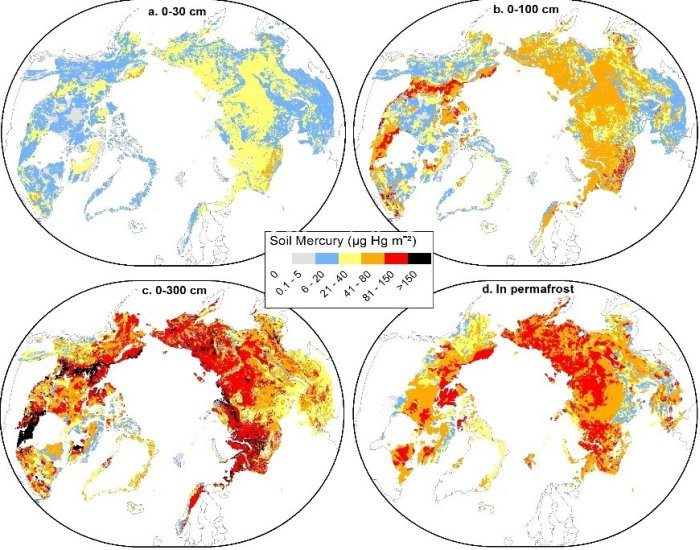Researchers just discovered a hidden threat in the northern hemisphere’s permafrost regions: massive reserves of toxic mercury.
The toxic mercury reserves were found by researchers from the U.S. Geological Survey who studied core samples from the Alaskan permafrost. According to their estimates, there are approximately 793 million kilograms of natural mercury that have been trapped in the Arctic permafrost since the last Ice Age.
This disturbing discovery now only adds to the threat posed by the permafrost if it thaws. Until recently, experts only believed that the thawing of the Arctic’s icy landscape would release dangerous amounts of greenhouse gases.
However, the potential severity of this problem has increased significantly due to the risk of massive amounts of mercury also being released into the environment following the potential thawing of this permafrost.
Apparently, the permafrost, or the frozen soil covering the vast terrains of the northern hemisphere, confines both carbon and toxic mercury substances in the ground. Should the permafrost melt, experts warned it could worsen global warming and cause unimaginable harm to all living organisms.
“This discovery is a game-changer,” Paul Schuster, a hydrologist at the U.S. Geological Survey in Boulder, Colorado and lead author of the new study, was quoted as saying. “We’ve quantified a pool of mercury that had not been done previously, and the results have profound implications for better understanding the global mercury cycle.”
Researchers just discovered massive reserves of toxic mercury in the #Arctic permafrost. Experts now believe that this could have grave implication if the frozen soil covering the northern hemisphere thaws.Click To TweetToxic Mercury Reserves
According to the study published by the researchers in the journal Geophysical Research Letters, the amount of toxic mercury trapped in the permafrost is said to be equivalent to approximately 50 Olympic swimming pools. That is reportedly “twice as much mercury as the rest of all the soils, the atmosphere, and ocean combined.”
“There would be no environmental problem if everything remained frozen, but we know the Earth is getting warmer,” claimed Schuster, a hydrologist at the US Geological Survey. “Although measurement of the rate of permafrost thaw was not part of this study, the thawing permafrost provides a potential for mercury to be released – that’s just physics.”

For Schuster and his team to measure the level of toxic mercury, they took cores from across the Alaskan permafrost. They then extrapolated the measured mercury levels to calculate how much of the toxic substance is hidden in the permafrost across the globe. Part of the frozen landscape is said to cover vast portions of Canada, Russia, and other areas of the Northern Hemisphere.
If the permafrost thaws, the toxic mercury could spill into different water systems and could have serious implications. For instance, if the natural mercury is exposed to microbes, it could turn into a potent neurotoxin called methylmercury.
In the past, cases of methylmercury poisoning have already been reported in humans after consuming fish taken from methylmercury-contaminated waters.
Steve Sebestyen, a researcher at the USDA Forest Service in Grand Rapids, Minnessota who was not involved in the study, believes that there’s a “significant social and human health aspect” to the study.
“The consequences of this mercury being released into the environment are potentially huge because mercury has health effects on organisms and can travel up the food chain, adversely affecting native and other communities,” he said.
If that’s not alarming enough, toxic mercury could also get into the atmosphere and travel around the world, affecting not just the northern hemisphere, but the whole planet.
“What happens if the permafrost thaws? How far will the mercury travel up the food chain? These are big-picture questions that we need to answer,” Schuster went on to say.



















Comments (0)
Most Recent